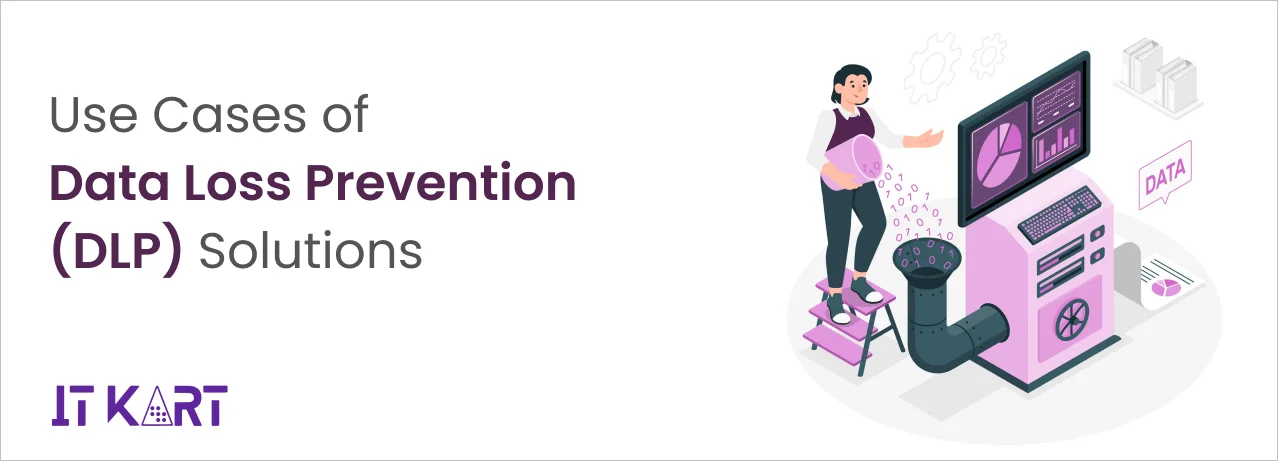Use Cases of Data Loss Prevention (DLP) Solutions
In today's digital age, data is one of the most valuable assets for organizations across all sectors. With the increase in data breaches and stringent regulations surrounding data protection, Data Loss Prevention (DLP) solutions have emerged as a crucial tool for safeguarding sensitive information. DLP technology helps organizations detect and prevent potential data breaches by monitoring, detecting, and blocking sensitive data from being sent, received, or accessed in an unauthorized manner.
Let's delve into some of the key use cases of DLP solutions that highlight their importance and versatility in maintaining data security.
1. Compliance with Data Protection Regulations
One of the primary drivers for adopting DLP solutions is to ensure compliance with various data protection regulations such as GDPR, HIPAA, PCI DSS, and CCPA. These regulations mandate stringent measures to protect sensitive personal data and impose heavy fines for non-compliance.
Example: A healthcare organization uses DLP to monitor and control the transmission of patient records to ensure that they are not shared outside the organization in violation of HIPAA regulations.
2. Protection of Intellectual Property (IP)
Companies invest significantly in research and development to create intellectual property, which can include proprietary algorithms, product designs, and confidential business strategies. Protecting this IP is critical to maintaining a competitive edge.
Example: A tech company employs DLP to monitor and prevent the unauthorized sharing of source code and technical documentation via email or file-sharing services, thereby protecting its innovative projects from industrial espionage.
3. Preventing Insider Threats
Insider threats, whether malicious or accidental, pose a significant risk to organizational data. Employees might inadvertently send sensitive information to the wrong recipient or maliciously exfiltrate data for personal gain.
Example: A financial institution utilizes DLP to detect and block attempts by employees to transfer customer financial data to personal email accounts or unauthorized cloud storage services.
4. Securing Remote Work Environments
The rise of remote work has expanded the attack surface for cyber threats. Ensuring data security in a distributed work environment is challenging but essential.
Example: A multinational corporation deploys DLP solutions to monitor data transfers and enforce security policies on remote endpoints, ensuring that sensitive corporate data is not leaked through unsecured home networks or personal devices.
5. Safeguarding Customer Information
Customer trust is paramount, and a breach of sensitive customer information can be devastating for a company’s reputation and bottom line. DLP solutions help in protecting personally identifiable information (PII) from unauthorized access and disclosure.
Example: An e-commerce platform uses DLP to ensure that customer credit card details and addresses are not exposed through web applications or customer support channels, aligning with PCI DSS requirements.
6. Mitigating Risks in Cloud Environments
As organizations migrate to cloud services, the risk of data leakage increases due to the shared responsibility model and the dynamic nature of cloud environments. DLP solutions extend their protection capabilities to the cloud to address these risks.
Example: A SaaS provider integrates cloud-based DLP to monitor and control the flow of sensitive data within cloud storage services and applications, ensuring compliance with data residency and privacy laws.
7. Email Security
Email remains a primary vector for data breaches, whether through phishing attacks or accidental data leakage. DLP solutions can scan outbound emails and attachments for sensitive content and apply policies to prevent data loss.
Example: A legal firm uses DLP to scan outgoing emails for confidential client information and applies encryption or blocks the email if it violates the firm’s data security policies.
8. Ensuring Data Integrity in Mergers and Acquisitions (M&A)
During M&A activities, large volumes of sensitive data are exchanged between organizations, increasing the risk of data leakage. DLP solutions help secure this data throughout the transaction process.
Example: A company undergoing an acquisition deploys DLP to monitor and secure the transfer of sensitive financial and strategic documents between the merging entities, ensuring that only authorized personnel have access.
Conclusion
DLP solutions play a critical role in modern data security strategies by providing comprehensive protection against data breaches and ensuring compliance with regulatory requirements. From safeguarding intellectual property to securing remote work environments, DLP is an indispensable tool for organizations aiming to protect their most valuable asset—data. As cyber threats continue to evolve, the adoption and refinement of DLP technologies will remain a top priority for businesses worldwide.
